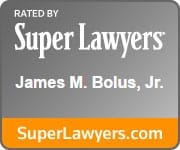Other Recent Results
-
A $314,000 jury verdict in Beasey v. Abel Construction, Ford Motor Company and C-Logic. Bo Bolus tried this premises liability case for 2 weeks with his co-counsel, Bobby Heuke. Dewane Beasey was 58 year old security guard/fire officer employed by Allied Barton with which Ford had contracted security. As a fire officer he was assigned to respond to emergencies, including the fire suppression system, as a 1st responder. During the day he worked as a medical sales rep. At night he worked at the Kentucky Truck Plant for Allied Barton.
Monday night, January 11, 2016 Dewane was working his night shift when he responded to a water loss emergency at 7:30pm at the Abel Construction MPL expansion at KTP. Ford had contracted with Abel for the construction project. Ford had also contracted with C-Logic for 3rd party safety to make sure Abel complied with Ford safety rules and OSHA on the project.
Abel had torn down an existing plant wall for the expansion in December 2015. A combination sprinkler system/fire hose standpipe was exposed. Abel claimed the pipe was wrapped in a concrete blanket specked to handle temperatures down to 14 degrees F. On January 10 and 11 the temp got down to 10 degrees and then rose to 32 degrees at 5pm on the 11th. The pipe’s valve burst open due to freezing around 7:00pm. Ford pipefitters got to the site first and traced the pipe to its shut off valve and turned the water off at its source. They returned and started capping the pipe. The pipefitters testified the pipe was wrapped in plastic only that had no insulation properties. The pipefitters testified the pipe froze, thawed, and burst open.
Part of Dewane’s job was to turn off the water. He arrived at the site from the other side of the plant and did not realize the water was turned off. He walked by the pipefitters who were already trying to cap the pipe. Water was still coming out as the pipe drained. Dewane tried to trace the pipe to its source, like the pipefitters had done, to turn off the water. The pipefitters, however, had traced the pipe without stepping onto the construction site. Dewane stepped onto the construction site to trace the pipe. He stepped into what he thought was a puddle of muddy water, which was in reality concealing a 2 and 1Ž2 to 3 foot hole with muddy water. He tore his right patella tendon and sprained his right shoulder.
Ford in its investigation concluded the pipe failing and the hole not being properly barricaded and lit were the root causes of Dewane’s injuries. Failing to properly barricade the hole was a violation of Ford’s own safety rules. If the pipe failed due to freezing that was a violation of OSHA and National Fire Protection Association standards both of which require sprinkler system pipes to be protected from freezing. Ford did not conclude the pipe froze due to freezing, listing that as a possibility along with another possibility being Abel’s theory that the valve was shook loose due to vibrations from nearby construction. During discovery and at trial Ford tried valiantly to back off its root cause findings in favor of their contractors. Bolus and Heuke argued C-Logic should have caught the safety hazards Abel had created of an unbarricaded hole and uninsulated pipe.
Dewane’s safety expert and mechanical engineer expert both testified the improper insulation of the pipe was a violation of OSHA and the NFPA which had been adopted by the KBC. Ford/Abel hired a safety expert and C-Logic hired a forensic architect expert, both of whom begged out of the pipe freezing discussion though they were qualified to comment on such and one admitted he had done so in the past. The defense safety expert from KY testified the pipe was beyond his expertise (he is an NFPA member). The architect said it was beyond the scope of what he was asked to comment on. The defense experts testified Ford got it wrong as to the hole which only needed to be barricaded if it was 6 foot deep per OSHA.
The jury found for Dewane on the negligence per se instruction against Abel. The jury found for Abel, C-Logic, Ford, and Allied Barton (not a party) on their separate duty instructions. The jury found against Dewane on his duty instruction. Turning to apportionment the jury placed 60% of the fault on Abel and 40% on Dewane, who they awarded $64k for past medicals, $250,000 for pain and suffering, and nothing for future medicals or lost wages. The judgment totaled $188,552 against Abel Construction only.
Interestingly, before jury selection Ford and Abel claimed they had antagonistic interests and, therefore, were each granted 3 strikes. Abel struck a security guard from the pool but Ford did not. No antagonism was shown during the Tuesday openings, and no antagonism was shown during the proof on Wednesday and Thursday. Before the Ford Risk manager took the stand Friday Abel was asked if it had assumed Ford’s defense and Abel admitted it had. The Court chose to not inform the jury of this secret Mary Carter agreement which Bolus and Heuke argued went to the bias of the Ford witnesses and the bias of their overall trial strategy of defending Abel which Ford had found at fault in its pre-litigation investigation. The Ford Risk manager was planning on skipping the 1st trial in September 2017 in favor of a fishing trip when Abel had not yet assumed Ford’s defense. The Risk Manager sat through the entire 2 week trial in March after Abel had assumed Ford’s defense.”
- A jury verdict in excess of $10.5 million in Klosterman v. Falling Rock Park, which is nearly 10 times the amount of any prior verdict in the history of Oldham County, Kentucky. That case involved a Falling Rock Park, a rock quarry turned community swimming pool that allowed patrons to drink alcohol with no supervision. A man drove out of the quarry after drinking for much of the day, and struck a motorcycle driven by Charley Klosterman. Falling Rock Park denied that they allowed anyone to drink at the quarry. Significant evidence to the contrary was presented, including several police officers who witnessed drinking at the quarry, and the drunk driver who admitted that himself and the majority of the other patrons that day were drinking alcohol. By finding in favor of the Klostermans and including in their verdict an award of $2.5 million in punitive damages, the jury recognized the significant community safety hazard posed by Falling Rock Park, and sent the message that unsafe and reckless behavior is not tolerated by Kentucky juries.
- A $950,000 settlement in a premises liability case. A four (4) year old boy in Lawrenceburg, Anderson County, placed his hand in a meat grinder that his father had left running at his Chinese restaurant. The child’s hand was ground down to his wrist. The defense argued pre-litigation that the doctrine of “parental immunity” applied and the father and restaurant could not be held liable because the father was the one who was negligent. Legal research revealed that this doctrine was abolished in the 1970s except for two limited circumstances which did not apply to this case of negligent supervision. A life care planner and vocational expert were retained and the case settled at mediation. A substantial portion of the settlement was structured with the largest payment being $1,055,195 to the child when he reaches the age of 25 and may be a candidate for a potential hand transplant. At present, hand transplantation is still in its experimental stages.
- A $175,000 settlement in a premises liability case in 2008.





